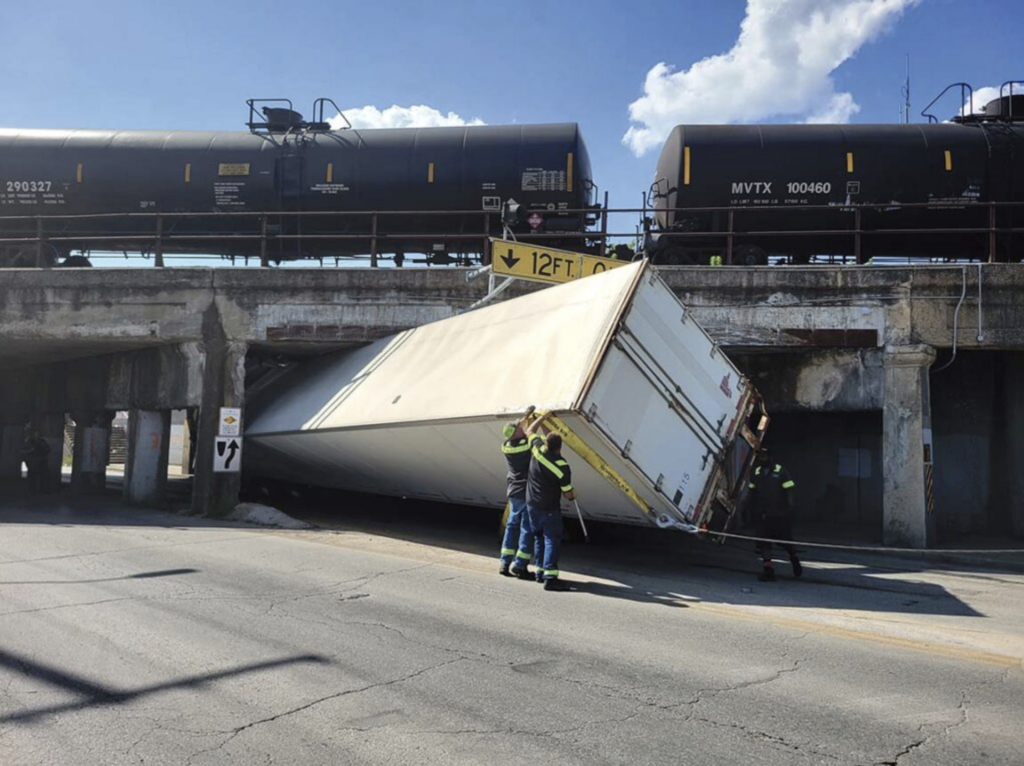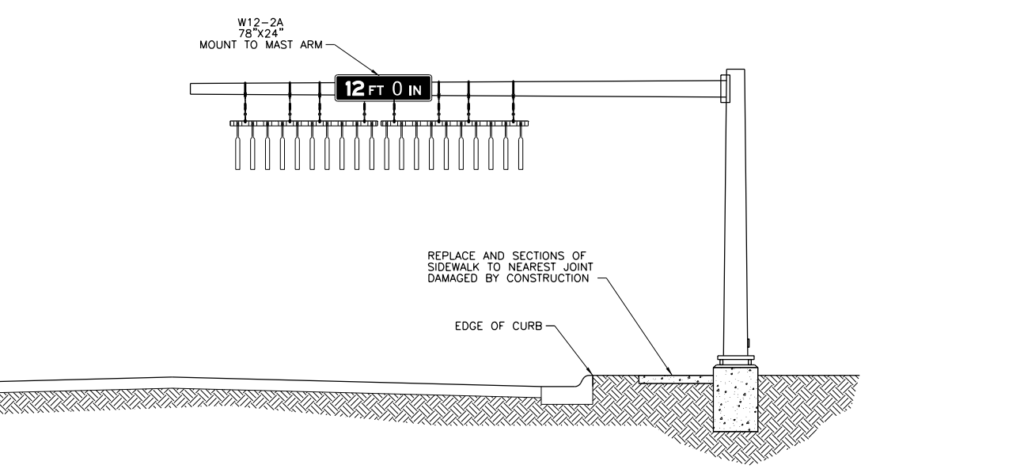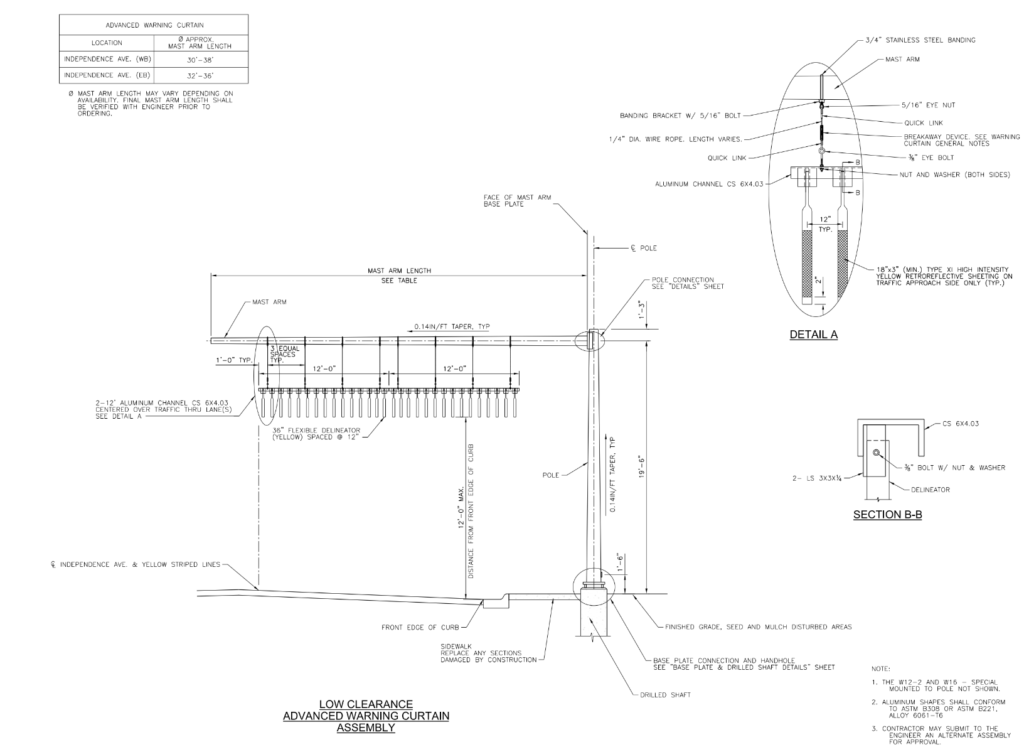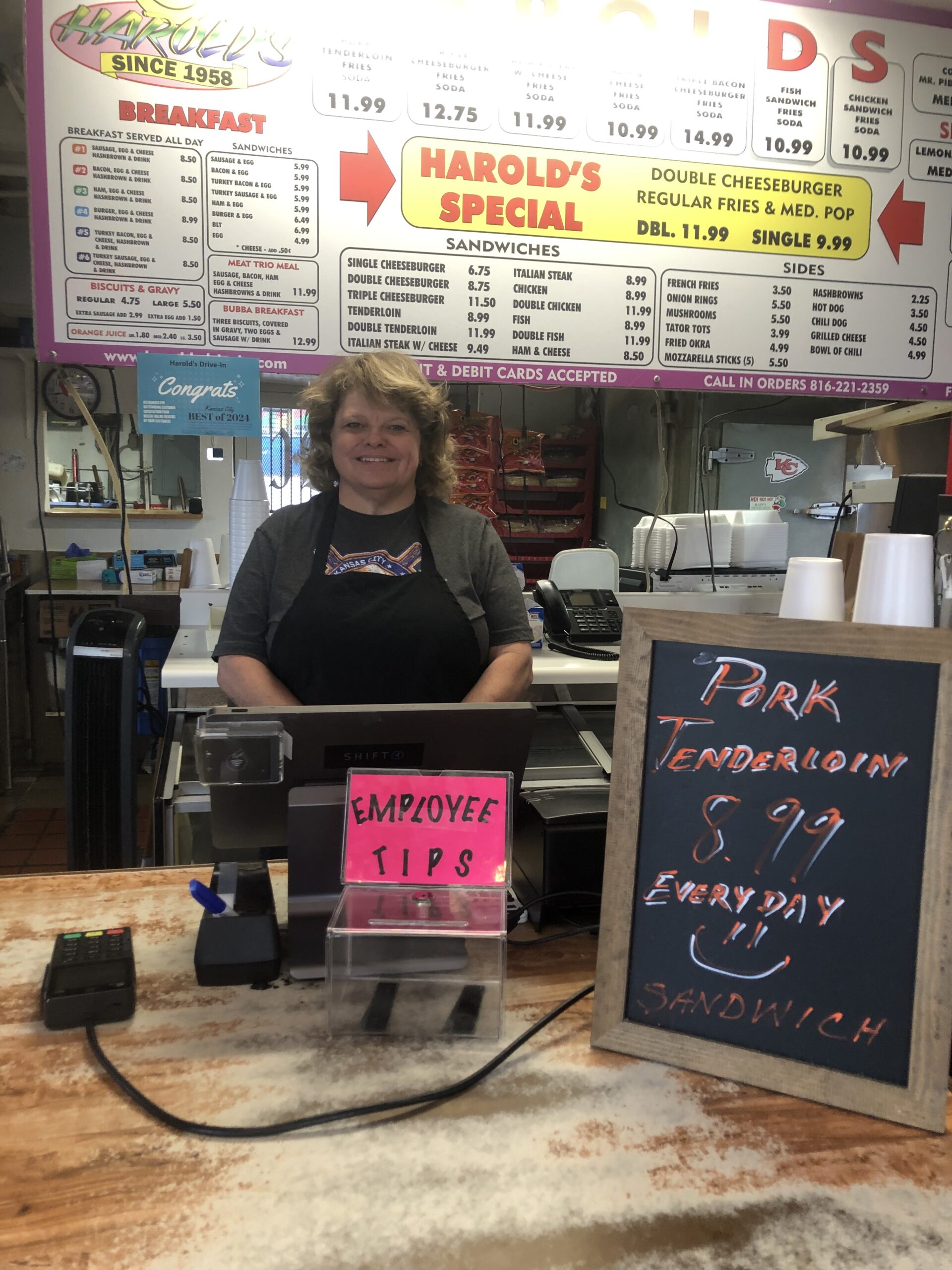
Michael Bushnell
Reporter
After thousands of strikes and the birth of at least two cottage industries poking fun at the Independence Avenue’s “truck eating” bridge, the infamous 12-foot clearance bridge’s reputation may be headed for a big downgrade.
On November 14, business and neighborhood stakeholders on the eastern end of Independence Avenue gathered at the offices of the Northeast Chamber of Commerce to offer input on the proposed advanced curtain warning system designed to quell the number of trucks hitting the Independence Avenue 12-foot bridge just east of the Independence Avenue and Wilson Road traffic signal.
The roughly $200,000 project is the joint effort of the city of Kansas City and the bridge’s owner, Kansas City Terminal Railway, with the city putting up roughly $150,000, of which $90,000 came from 4th District PIAC (Public Improvement Advisory Committee) contingency funds and the railroad (KCTY) putting up $56,000.
The session was called by Bobbi Baker-Hughes, President of the Northeast Chamber of Commerce and CEO of the Independence Avenue CID and 4th District City Councilman Crispin Rea when they received word that the project was ready to break ground but no public engagement had taken place with the impacted business owners along the Avenue between Wilson and Winner Roads.
“We received word that the chain curtain was ready to install but I had a couple of concerns, primarily for our business owners that are on either side of that bridge, that this kind of engagement didn’t happen before today,” said Baker-Hughes. “I want us to be able to talk about what the city has put forth in the form of engineering to reduce the number of stuck trucks under that bridge but also get business input and assistance on how do we make it work.”
The advanced curtain warning system would be installed on traffic signal arms that hang over the lane of traffic, one on either side of the bridge. The placement location of the advance warning system was the primary point of discussion at Tuesday’s meeting, specifically asking, what can the truck driver do and what escape route exists after they hit the hanging bollards.
As part of the project, the city is also installing more advance warning signage on both sides of the bridge leading up to the new warning system. According to City Engineer Nick Bosonetto, it’s just one more visual cue to drivers that a low bridge is coming up.
“The new warning system can’t be installed where it potentially blocks the sight line between the motorist and the traffic signal,” Bosonetto said. “We have to consider the functional area of an intersection is about 250 feet, depending on how fast you’re going in front of the signal.”

Also a major part of the discussion was escape points for trucks after they strike the hanging bollards. Initially, the westbound escape route would be Winner Road and the eastbound escape route would be Wilson Road. Both thoroughfares already carry large truck traffic and both have areas large enough to accommodate large vehicles turning around if need be.
During the evening’s discussion, the city proposed that now the installation of the eastbound warning system would be past the Wilson Road traffic signal and the westbound warning system would be past the Winner Road traffic signal, approximately 60 feet west of the White Avenue intersection. Both installation points would require truck drivers to back up in potentially heavy traffic after striking the hanging bollards in order to access either of the two escape points.
Also at issue, trucks, some in excess of 70 feet in length and weighing-in at 80,000 pounds or more, having to attempt at navigating through private parking lots to turn around or re-route after hitting the warning bollards.

Daniel Yuman, owner of the Taqueria Mexico Restaurant immediately east of the bridge, expressed concern about large trucks trying to navigate his small parking lot safely. “You would have to turn in either the Mercado Fresco or the Taqueria Mexico and that’s where I’m at. We don’t want too many trailers coming through, potentially hitting our customers or our employees’ cars.”
While no final decision was made during the meeting as to where the new advance warning systems would be installed, Councilman Rea noted that public engagement on the matter was a key issue. “I wanted to make sure you were heard on this, I know this was impactful and I know you care about making it safer,” he said. “You all are invested in this corridor, I get it. I wanted to make sure you had the opportunity to speak.”
Initially, construction on the project was to be completed by July 4, 2023 in order to take advantage of the partnership funding from KCTY. Early in September, 2023 a contract extension was executed with a scheduled project completion deadline of March 3rd, 2024.
Bosonetto noted that the timeline for getting the project started was getting shorter by the day. “Winter is coming and we can’t pour concrete bases, it’s a temperature thing with that,” he said.
Another public engagement meeting could be on the horizon soon. The Northeast News will have details on where and when that meeting takes place.

















